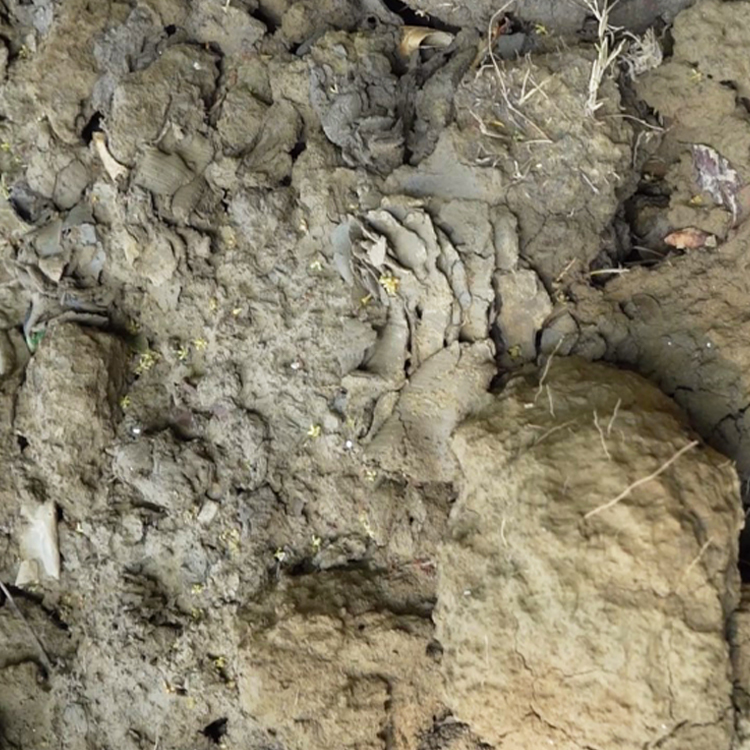Microbes are the life of Soil sdf
 M. A. Sobhan || Saturday 19 April 2025 ||
M. A. Sobhan || Saturday 19 April 2025 ||
Microbes are the base for all life forms on earth. Microbes act on air, soil, water, plants and all other items on earth. Microbes are intimately linked with all sorts of vibrant activities. Microbes are an inseparable entity in the web of life.
Microbes play significant role in growth and development of higher plants. Soil microbes play vital role in maintaining healthy and fertile soil, playing crucial role in nutrient recycling, decomposition, plant growth, ultimately supporting agricultural production and ecosystem maintenance. They are linked with nitrogen and carbon cycles. Microbes help in manufacturing oxygen and carbon dioxide. At the same time they make atmospheric nitrogen useful for various life forms.
Soil is mainly composed of minerals: 45%, organic matter: 5%, air: 25% and water: 25%. Soil organic matter is present as the store house of plant nutrients. Soil living micro-organisms take nutrient elements from the organic matter present in the soil.
The microbes present in the soil include fungi and bacteria. In addition, there are algae, archaea, protozoa and nematode. There are more microbes in a spoon of soil than the total number of people on earth.
Microbes are on the center of all living creation on earth because of their unique size, shape and variability of actions.
Microbes contributes to diverse actions including soil fertility improvement, purification from pollution, carbon storage and stock control, production, use and control of greenhouse gases like methane, and nitrous-oxide. Microbes carry out most important function for plants productivity like nitrogen and phosphorus cycle. Microbes serve saving crops from disease pest infestation. Enhance crop growth and increase production. Microbes help production and swallow up greenhouse gases like carbon-di-oxide, methane and nitrous- oxide. They also clear water and environment from pollutants.
Approach to save Microbes:
Zero tillage method of land preparation to be encouraged in order to saving the habit and habitat of microbes intact. In this method of seed sowing, very little or no disturbance is done on the soil. The best benefit of minimum tillage is that the seeds are sown just after the harvest of the previous crop. As a result, two or more crops are rotated on the same land in a season.
For an example, the Nayakrishi farmers in Dleduar upazila of Tangail district and Shahjadpur upazila of Sirajganj district sow the seeds of aus and aman rice mixed in Baishake (mid-April-mid May). Aus rice is harvested in Srabon-Bhadra (mid-July—mid-September) leaving aman rice crop growing in the field. In Ashin-Kartik (mid-September—mid-October), black-gram/mustard/grass-pea seeds are sown broadcast in the aman rice field. Aman rice is harvested in Agrahayon-Poush (mid-November—mid January). Matured crops of black gram/mustard/ grass pea are harvested in Magh—Falgun (mid-January—mid March):
In this method of relay cropping, not only higher yield of crops but also the cost of production is significantly reduced, soil erosion is minimized and at the same time soil fertility is also enriched.
Dissolved antibiotics as evolved from microbes in the soil clean water. Soil living microbes improve the root system of plants which contribute to plants resistance to drought and pests.
The root system of plants is influenced by the environment of the biological and chemical composition of the systems. Nitrogen fixing bacteria and such other organisms are active in this sphere. For example, rhizobium bacteria which fixes atmospheric nitrogen. They also help easy availability of phosphorus. In group, these bacteria contribute to organic manure production. As a result, soil fertility is improved and the need for amendment of chemical fertilizer is reduced, on the other hand. Over all, they contribute to reduction of environment pollution.
Sufficient food, air, and water supply must be ensured in the soil in order to increase the efficiency of microbes in the soil. With a view to reducing the disturbance on the habitat, dependence on chemical fertilizer should be phased out and the use of pesticides must be totally stopped.